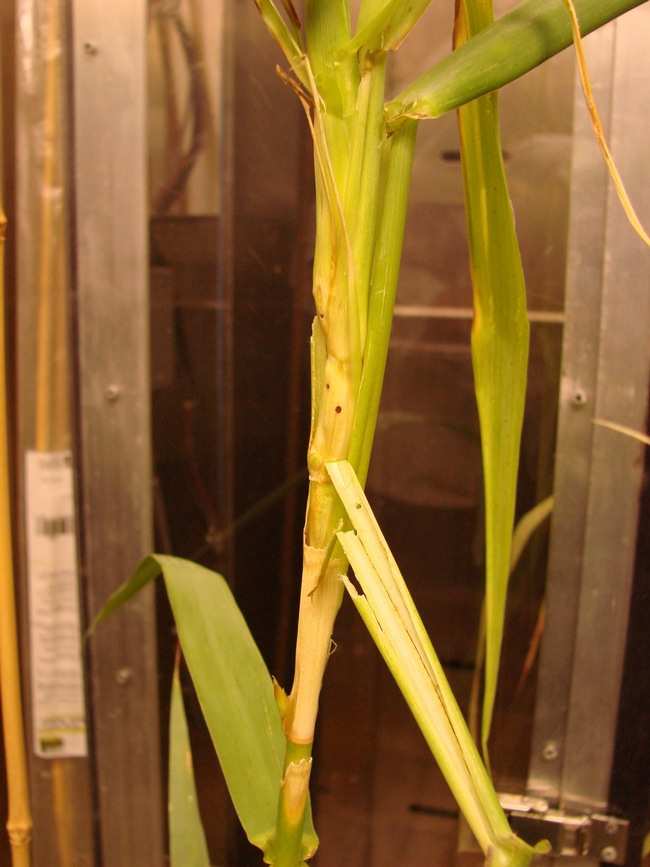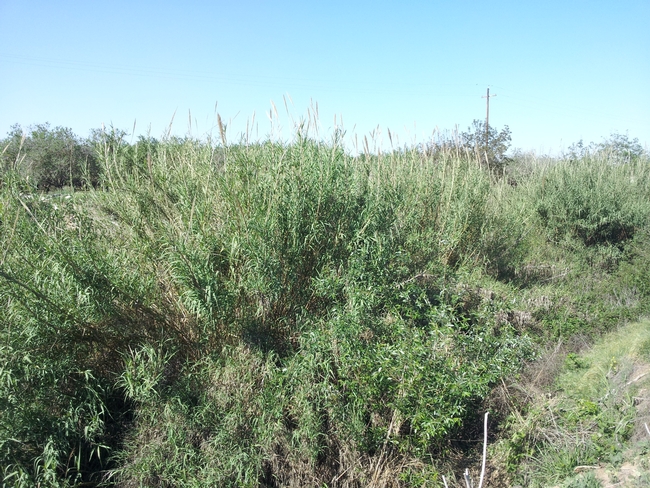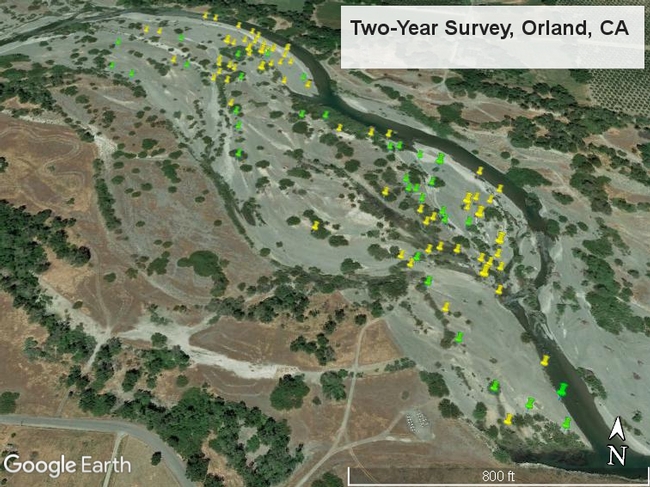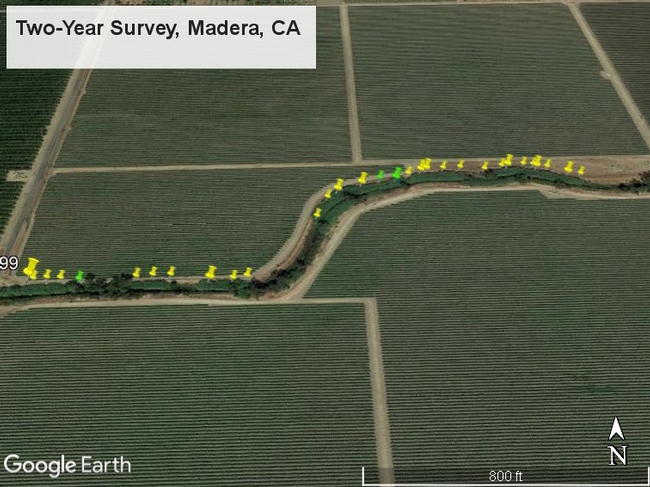Arundo or giant reed (Arundo donax) is invasive in riparian areas in much of central and southern California, as well as other parts of the U.S. In the Sacramento-San Joaquin Delta, arundo grows on islands and along the edges of sloughs and canals. It is also common along the water's edge in the watersheds upstream of the Delta. This giant grass can grow to 20 ft tall or more and from a distance might be mistaken for corn. Arundo stems act like giant straws, wasting Delta water as the stems rapidly grow during the spring and summer. Dense mature patches of arundo block access to water, destabilize flood levees and constitute a fire hazard. For these reasons, the U.S. Army Corps of Engineers and various state and local agencies have spent a lot of time and money to control arundo in the Delta with herbicides.


The California Department of Food and Agriculture first released the arundo wasp in northern California in 2010. The arundo wasp was released more widely by USDA-ARS scientists in support of the USDA Delta Region Areawide Aquatic Weed Project (DRAAWP) upstream of the Delta in the spring and summer of 2017. Wasps were released at three sites near Orland, CA in the northern Sacramento River watershed, and at three sites near Madera, CA in the southern San Joaquin River watershed. Now, two years later, surveys by USDA-ARS scientists have found that the arundo wasp has established vigorous populations at two of the sites (one in each region). In a survey of 99 sample points at one site near Orland, 66% of the points had exit holes or galls. In a survey of 30 points at one site near Madera, 90% of the points had galls or exit holes. At the Orland site, large galls were seen on young main stems at sampling points up to 100 meters from the original 2017 release plots. These stems typically do not survive galling, as the gall stunts growth and increases susceptibility to stem breakage. Surveys are ongoing at four other sites (two per region) at which smaller wasp populations may be present. Releases and surveys are also ongoing at sites in the western and southern Delta. The arundo wasp is showing promise as a biocontrol agent of arundo in northern California.
Patrick Moran is a Research Entomologist with the USDA-ARS Invasive Species and Pollinator Health Research Unit.


